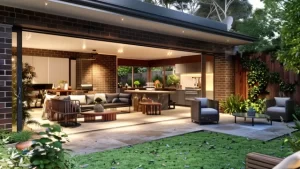
While both vinyl and laminate are man-made floors, there are quite a few differences between the materials. They include, for example, the possible location. Because while PVC is suitable for use in damp rooms, such as the bathroom, laminate, on the other hand, would swell due to its wooden core. However, not every type of vinyl can be used in rooms with high levels of moisture; only solid vinyl without HDF is designed for this.
The advantages of lvp flooring in hendersonville nc flooring also include that it is very warm to the feet and generates less noise than laminate options. Furthermore, in contrast to that of laminate, its surface is antibacterial and therefore a good alternative for people with allergies. Laminate, on the other hand, has the edge in terms of sustainability, as it can be disposed of in a more environmentally friendly way, vinyl coverings can only be destroyed in incinerators. In addition, laminate is usually cheaper and somewhat more stable. Another plus point is that it’s is good to its click mechanism, laminate can be easily installed or removed. For comparison’s sake, self-adhesive vinyl coverings are extremely difficult to get rid of.

In spite of these contrasts, the soils have certain characteristics in common. Both options are very easy to care for and resilient and are offered in numerous designs. Which artificial floor is best for you and your needs is ultimately something you have to decide for yourself.
A decision does not only have to be made between laminate and vinyl. Because if you have chosen vinyl, the next question goes straight to: Which type of vinyl should it be. After all, each member of the vinyl family has different properties that make it more suitable for certain uses and personal preferences than for others. The vinyl flooring class includes vinyl floors with a click system, vinyl floors in plank format and vinyl with an HDF core board. The last variant is a multi-layer floor covering with integrated impact sound insulation and a wood fiber core, with HDF standing for high-density fibreboard. The exact construction varies from manufacturer to manufacturer, but it is usually made up of several layers of vinyl.
Thickness, usage and wear class is Vinyl and laminate are divided into so-called wear classes. A distinction is made here between private and commercial use.








